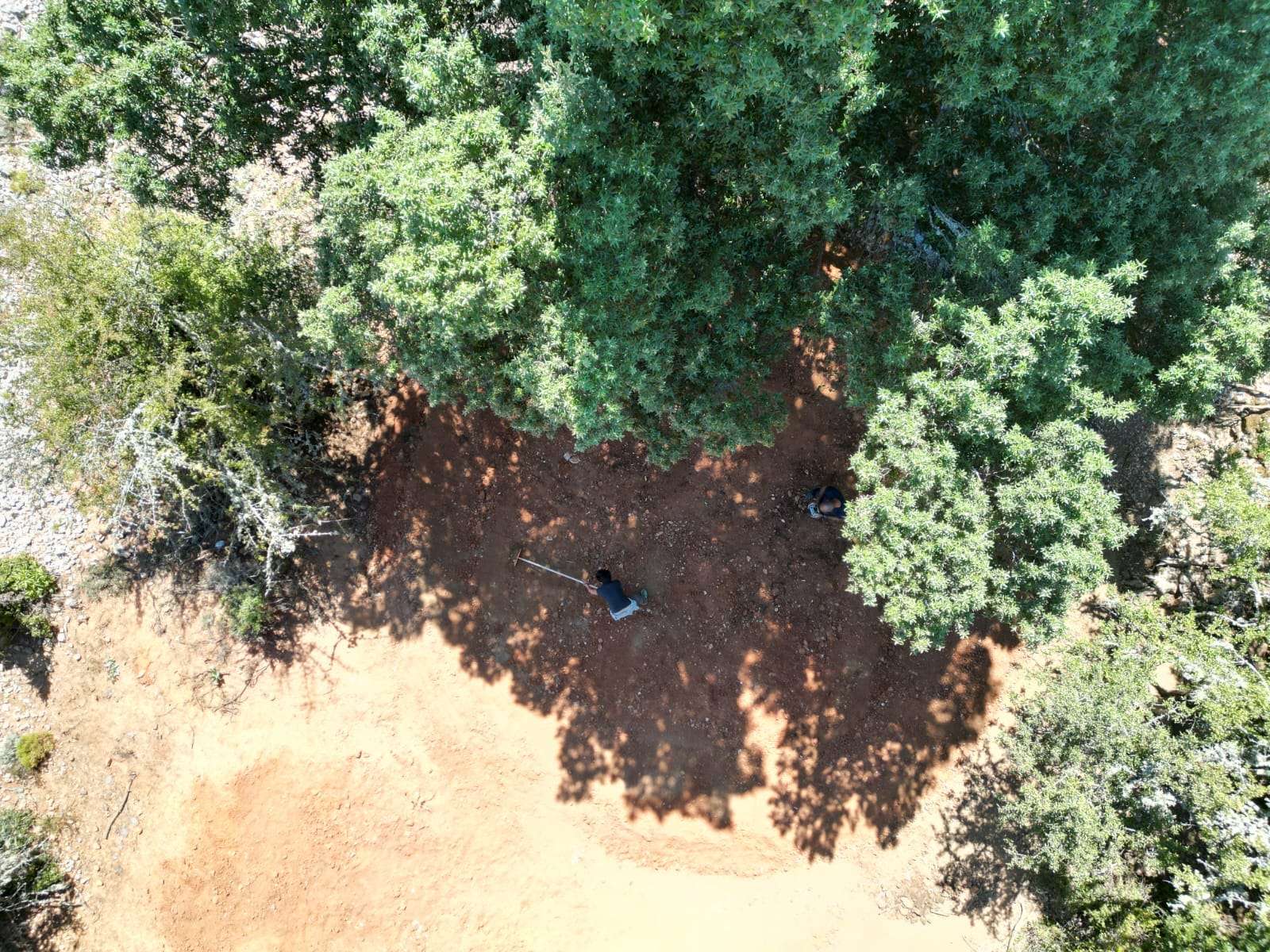
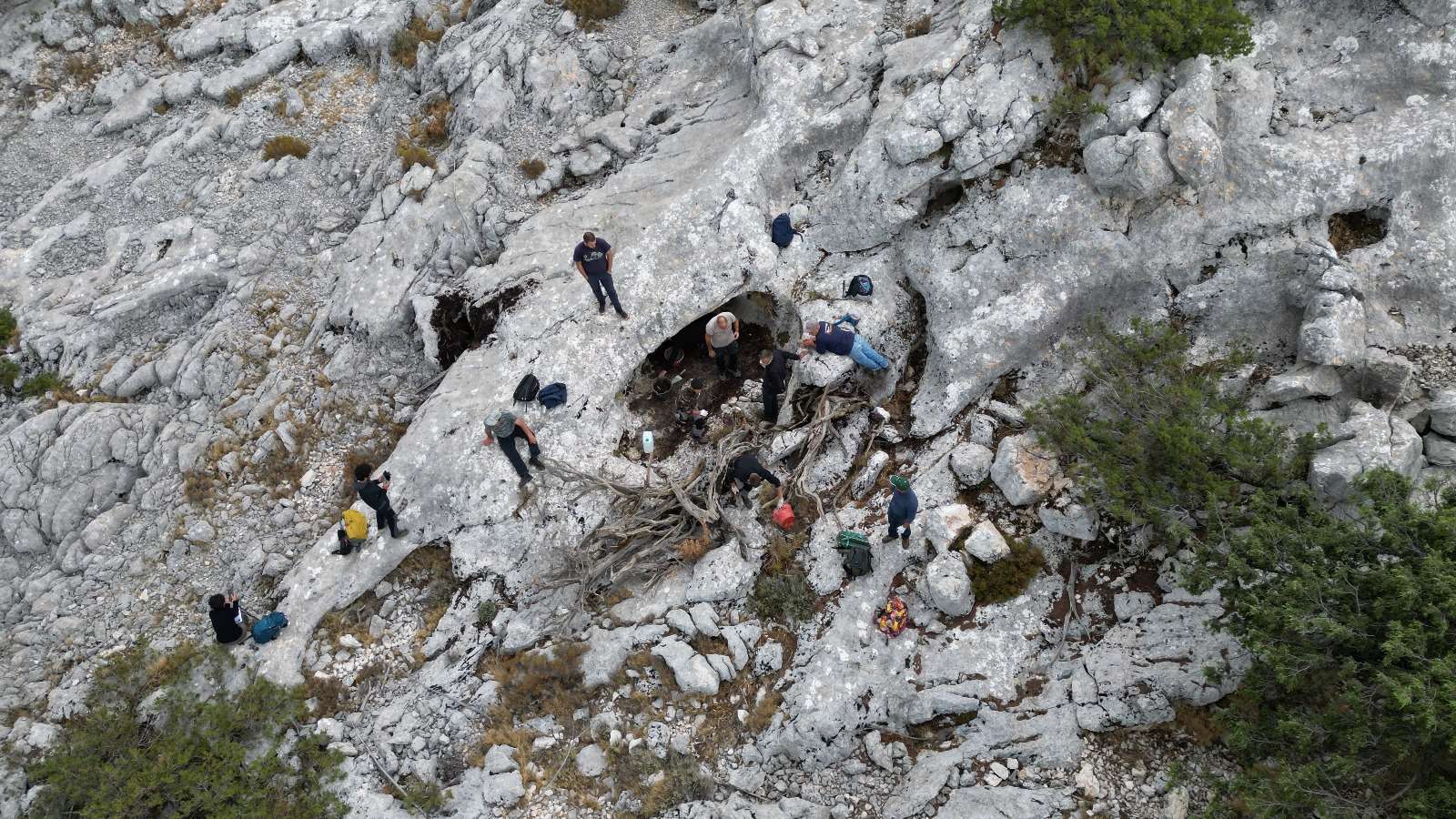


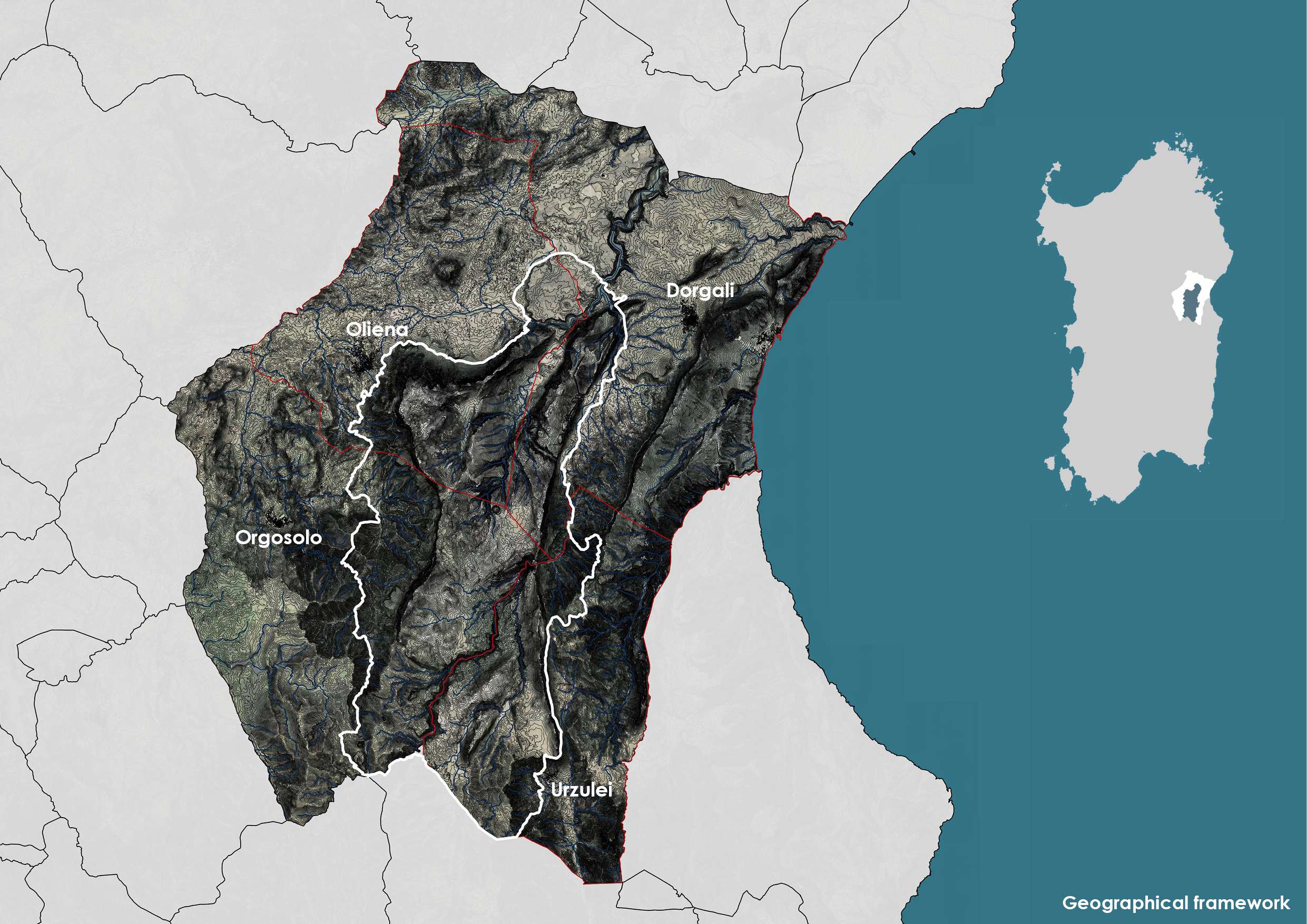
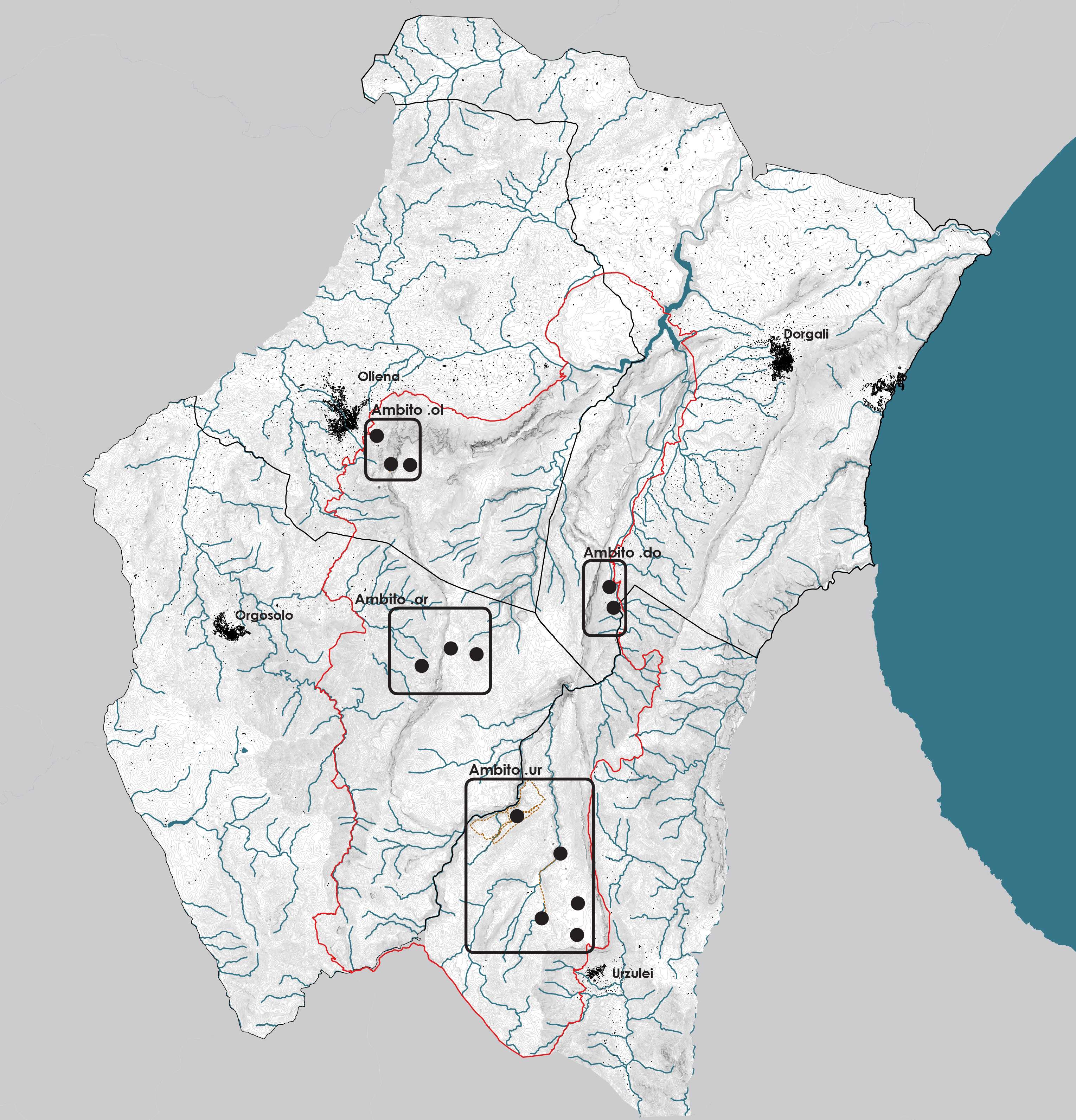

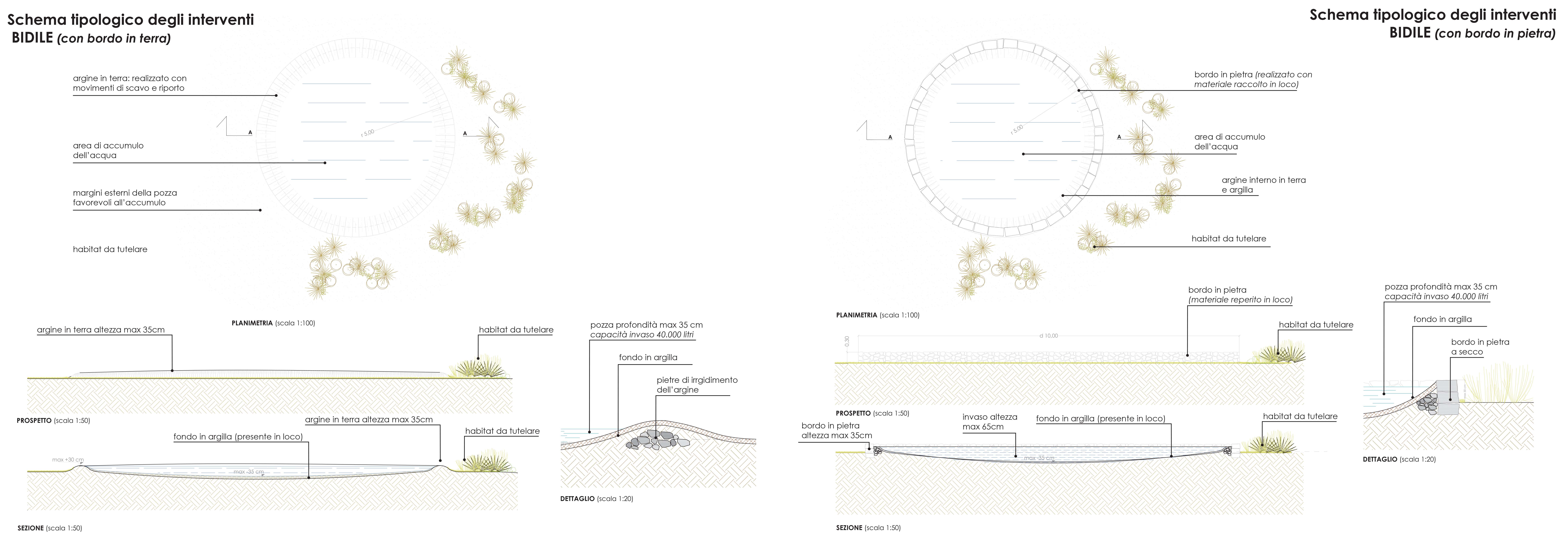
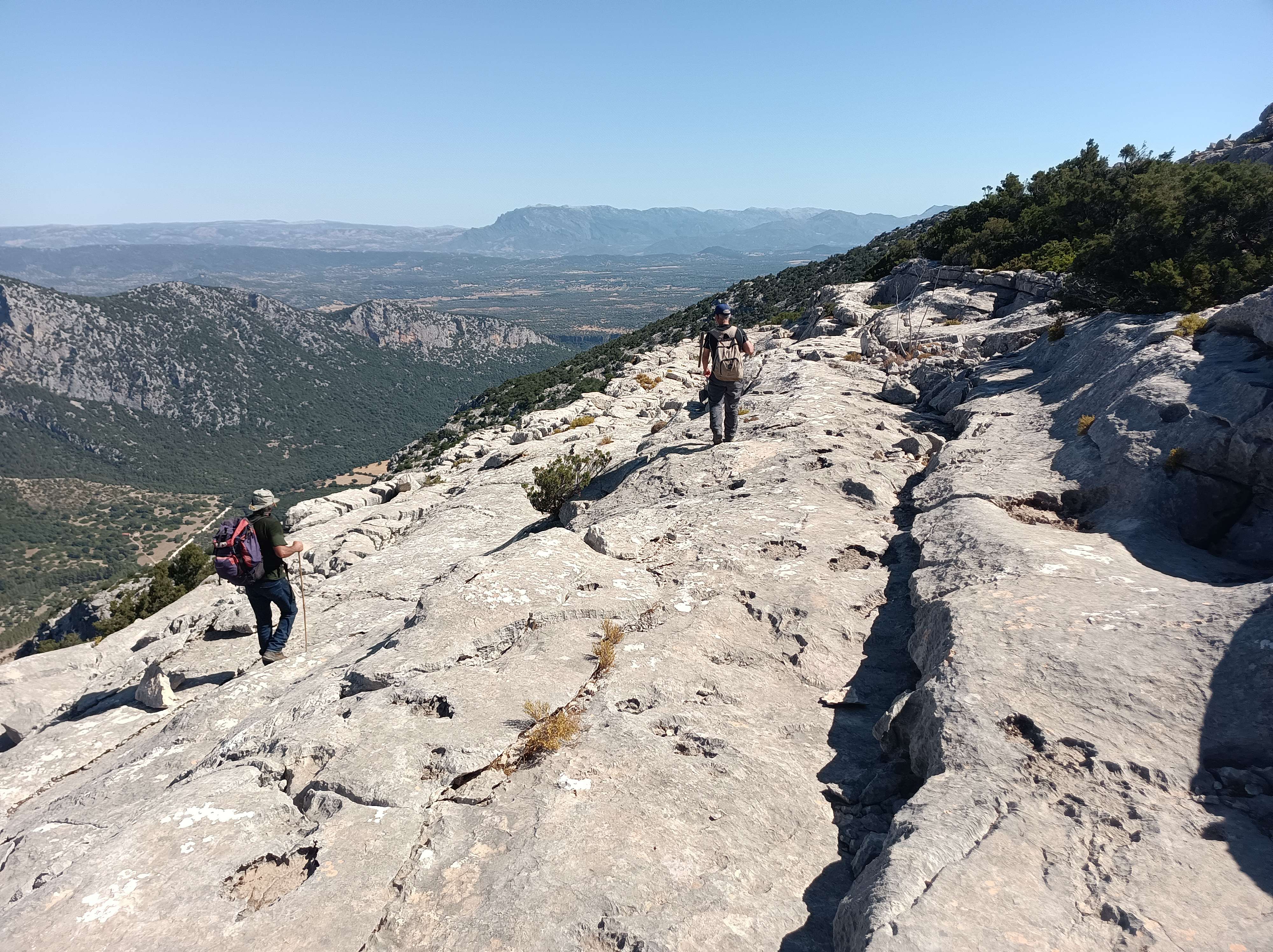
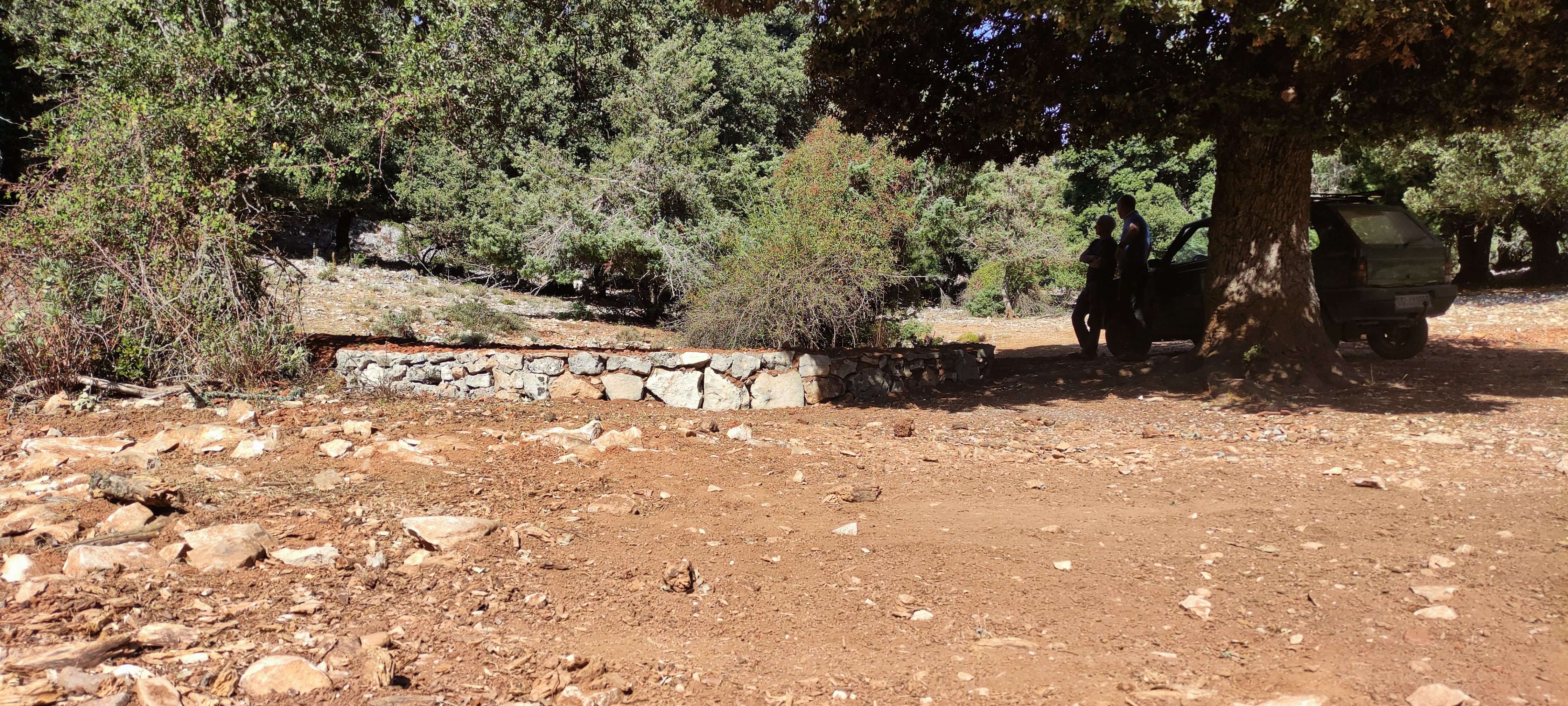
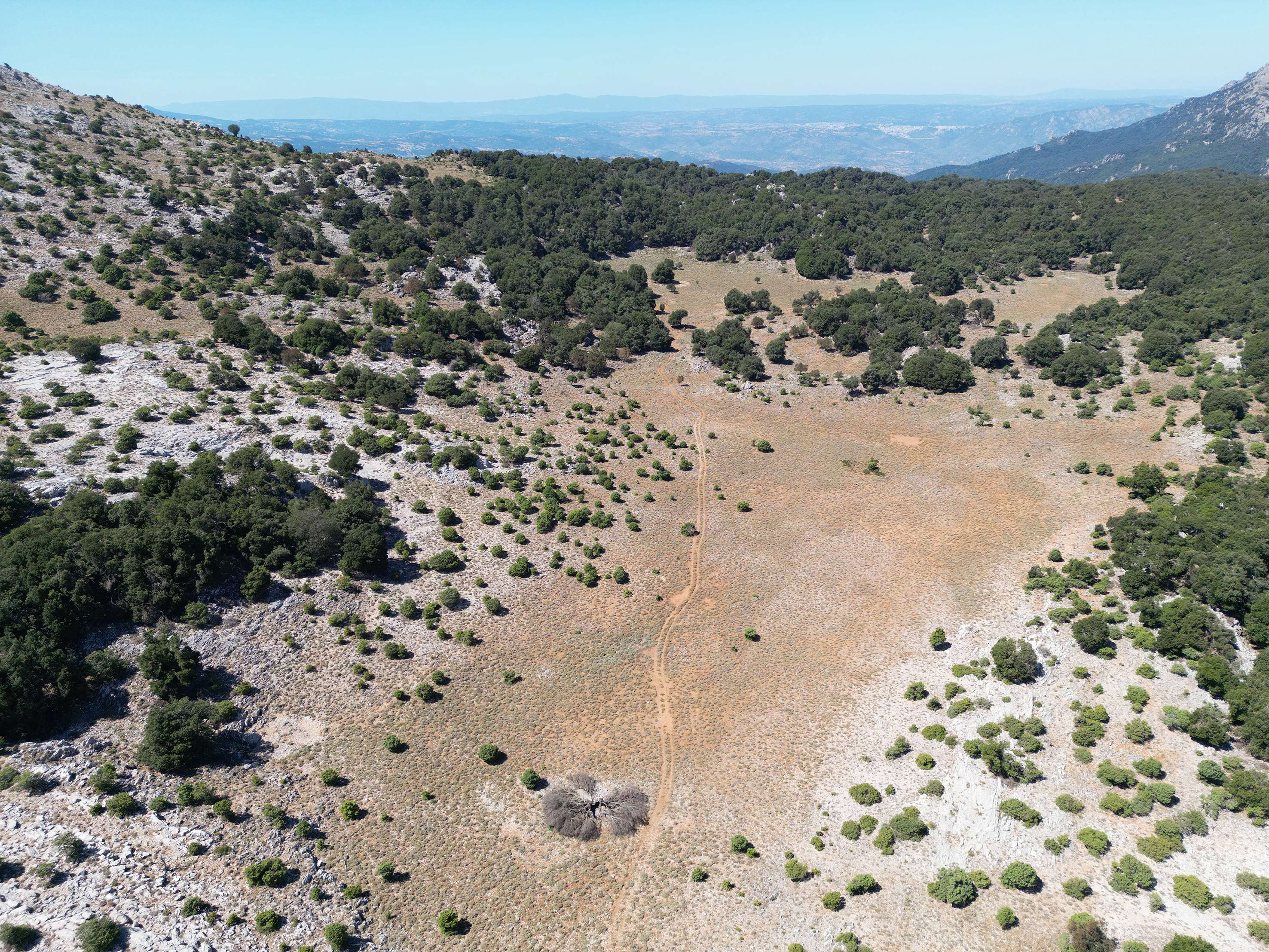


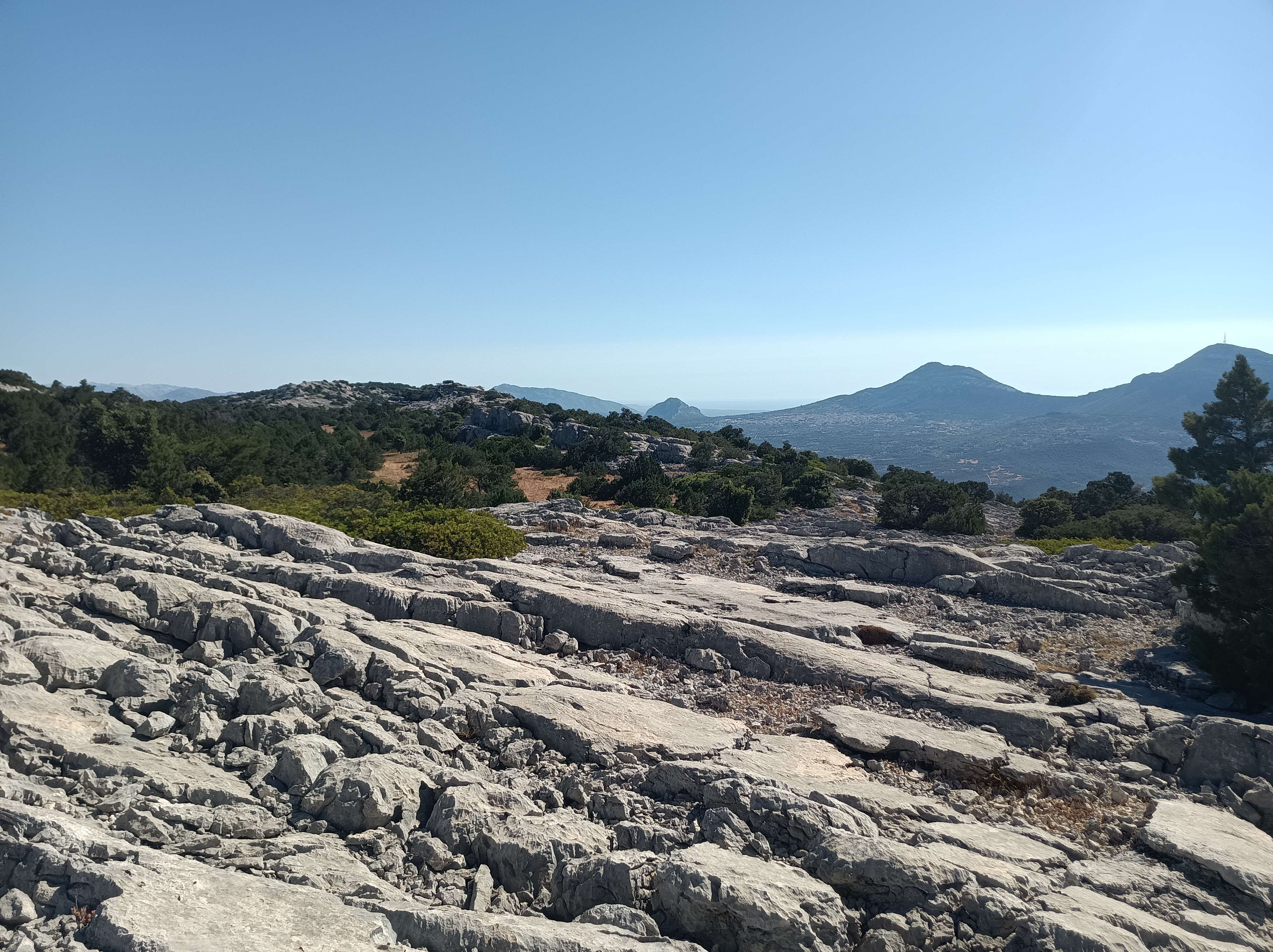
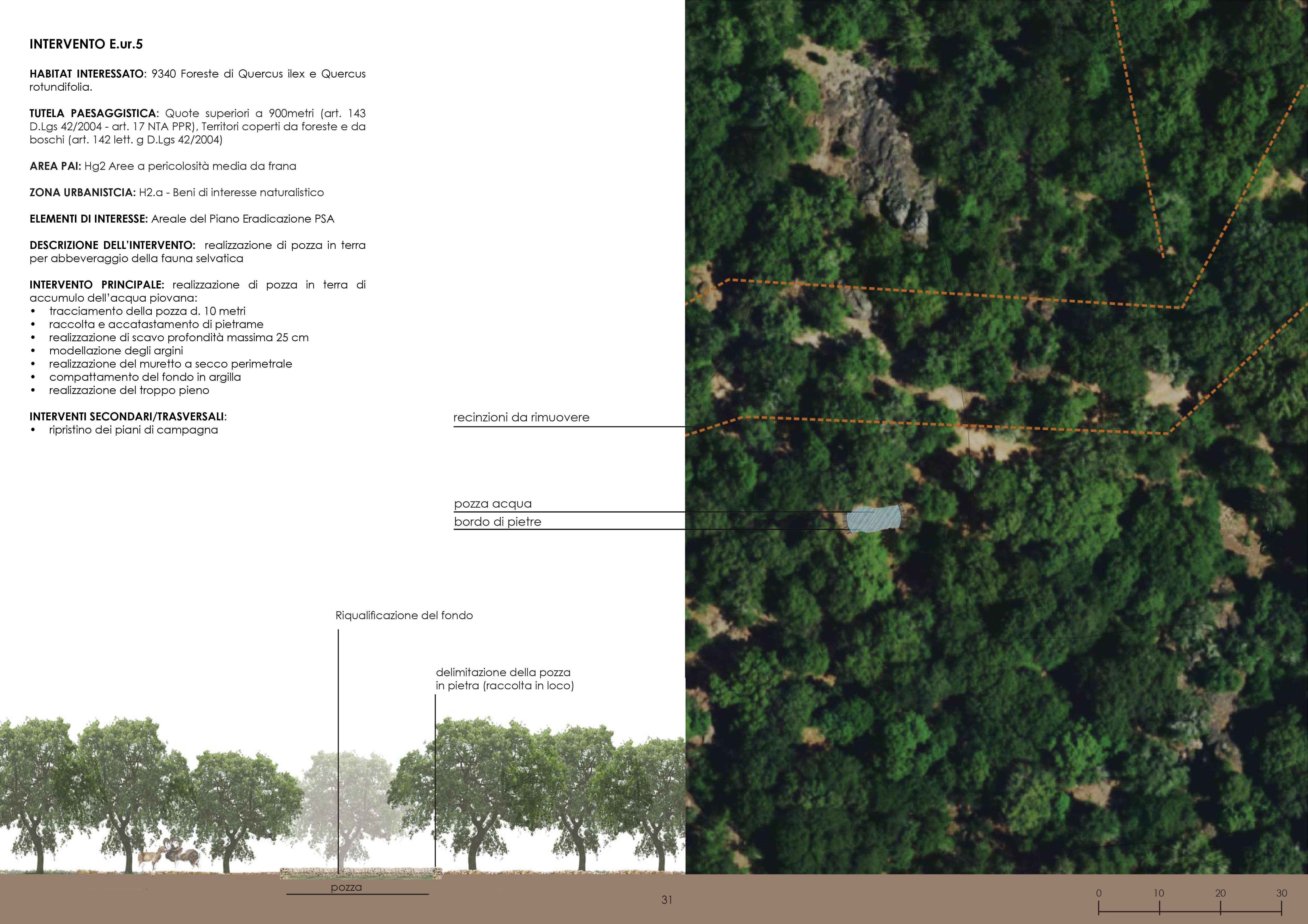
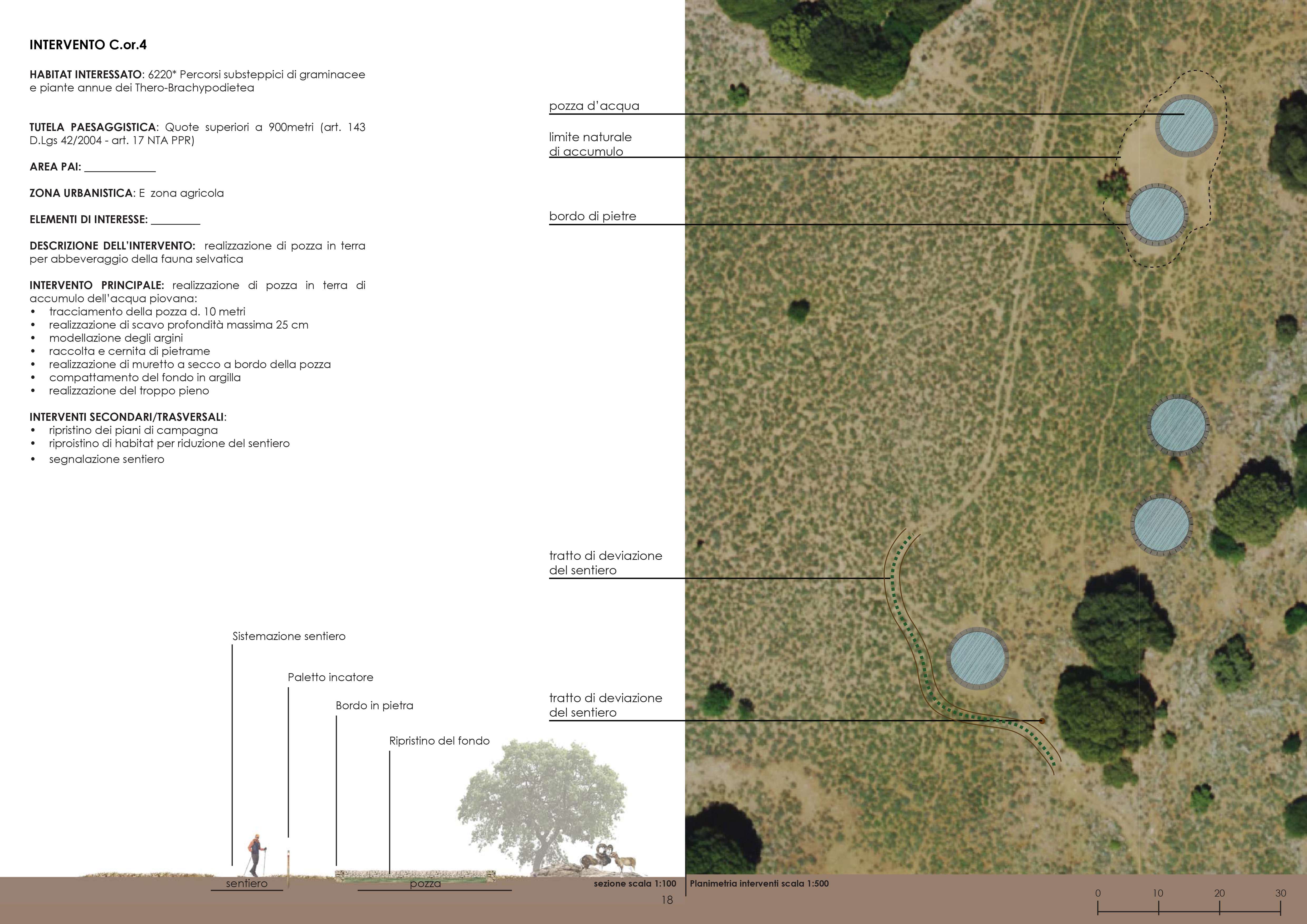
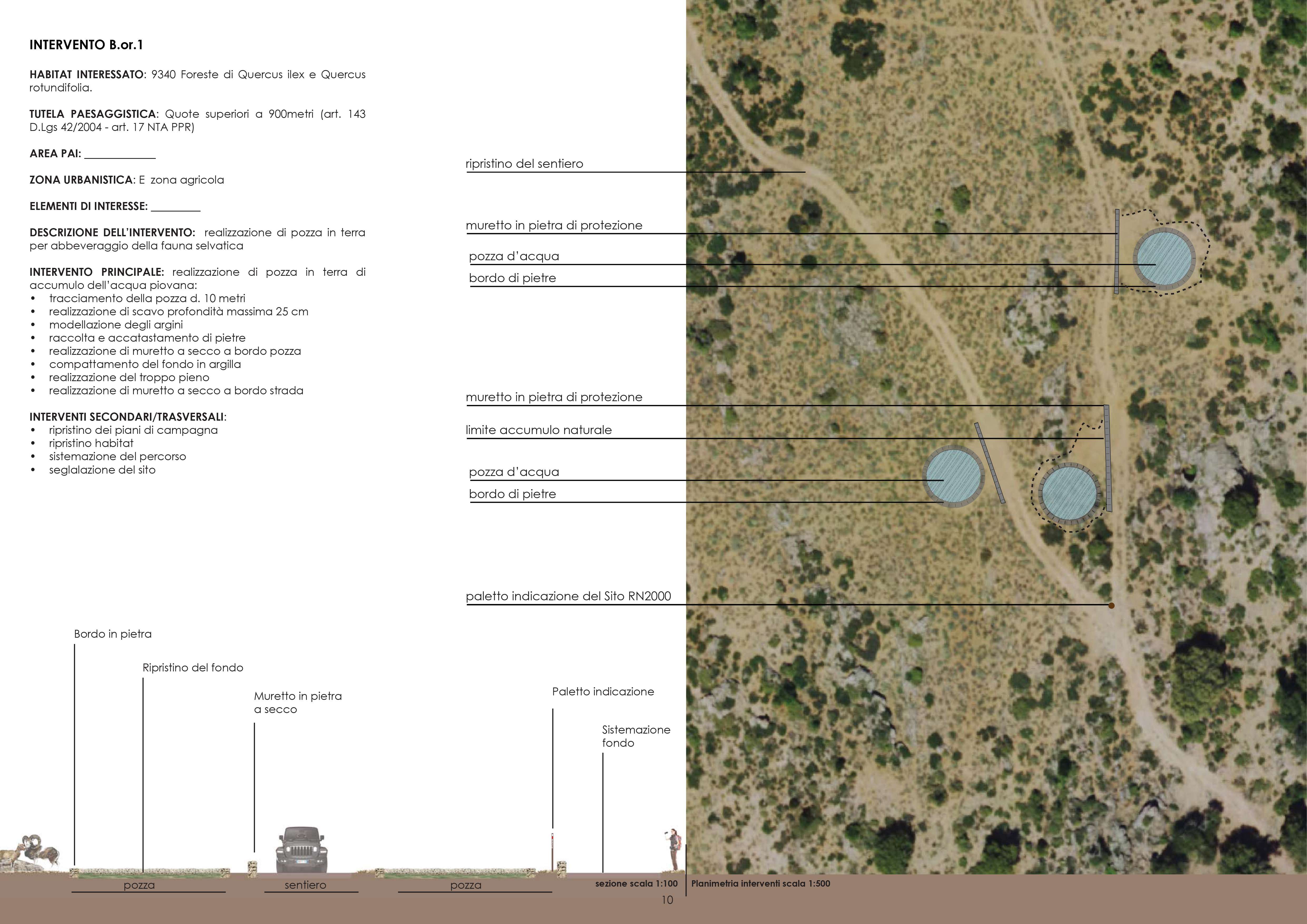

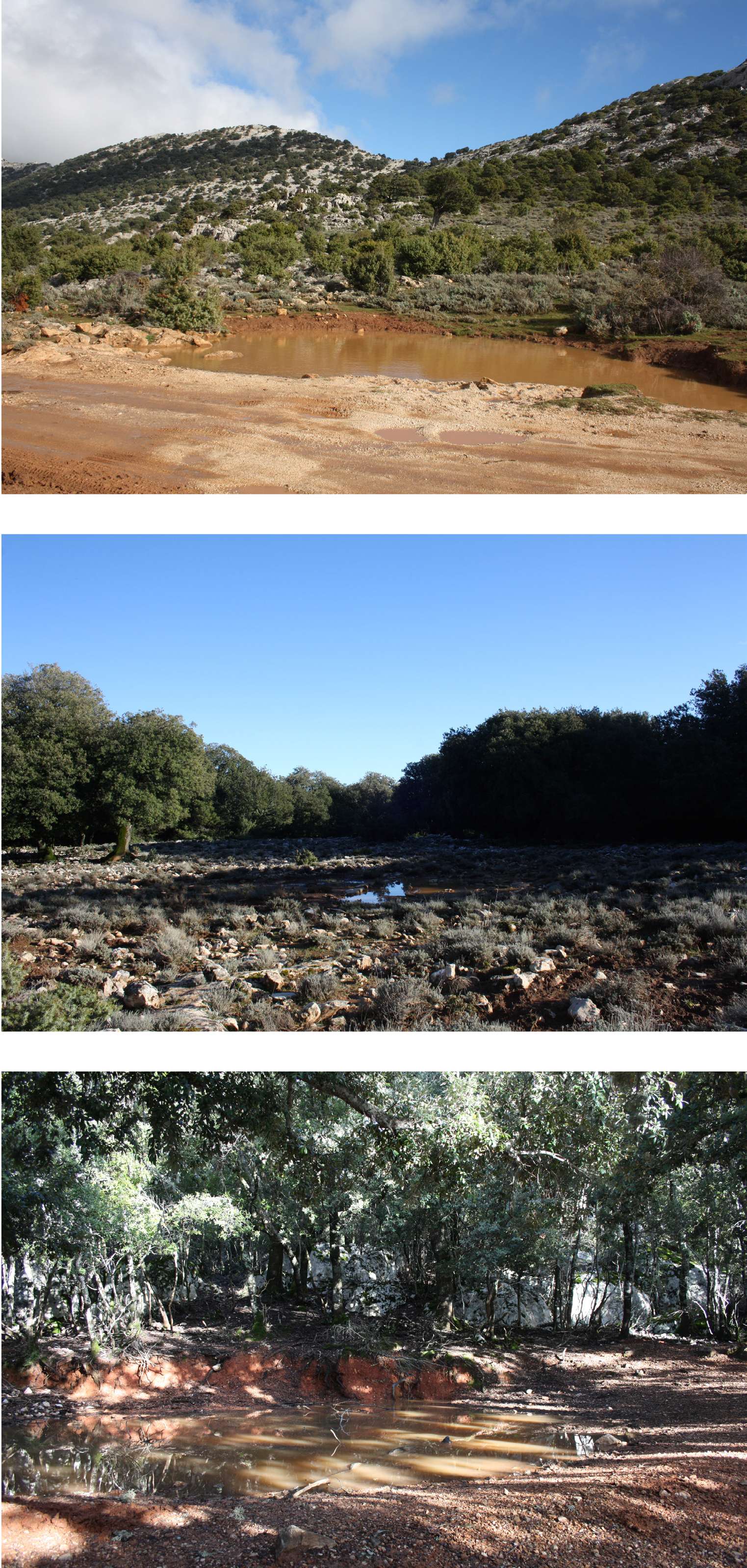

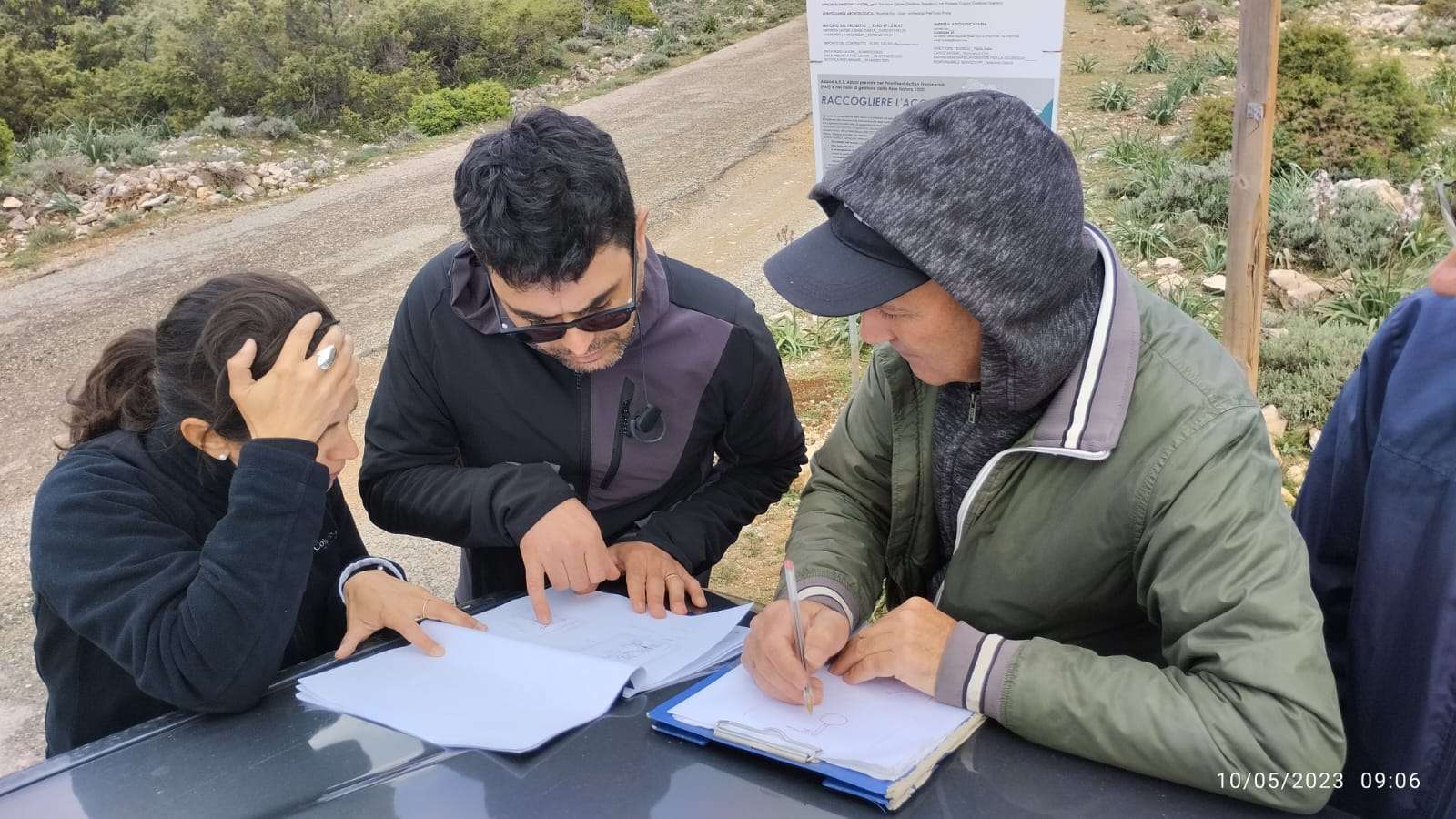
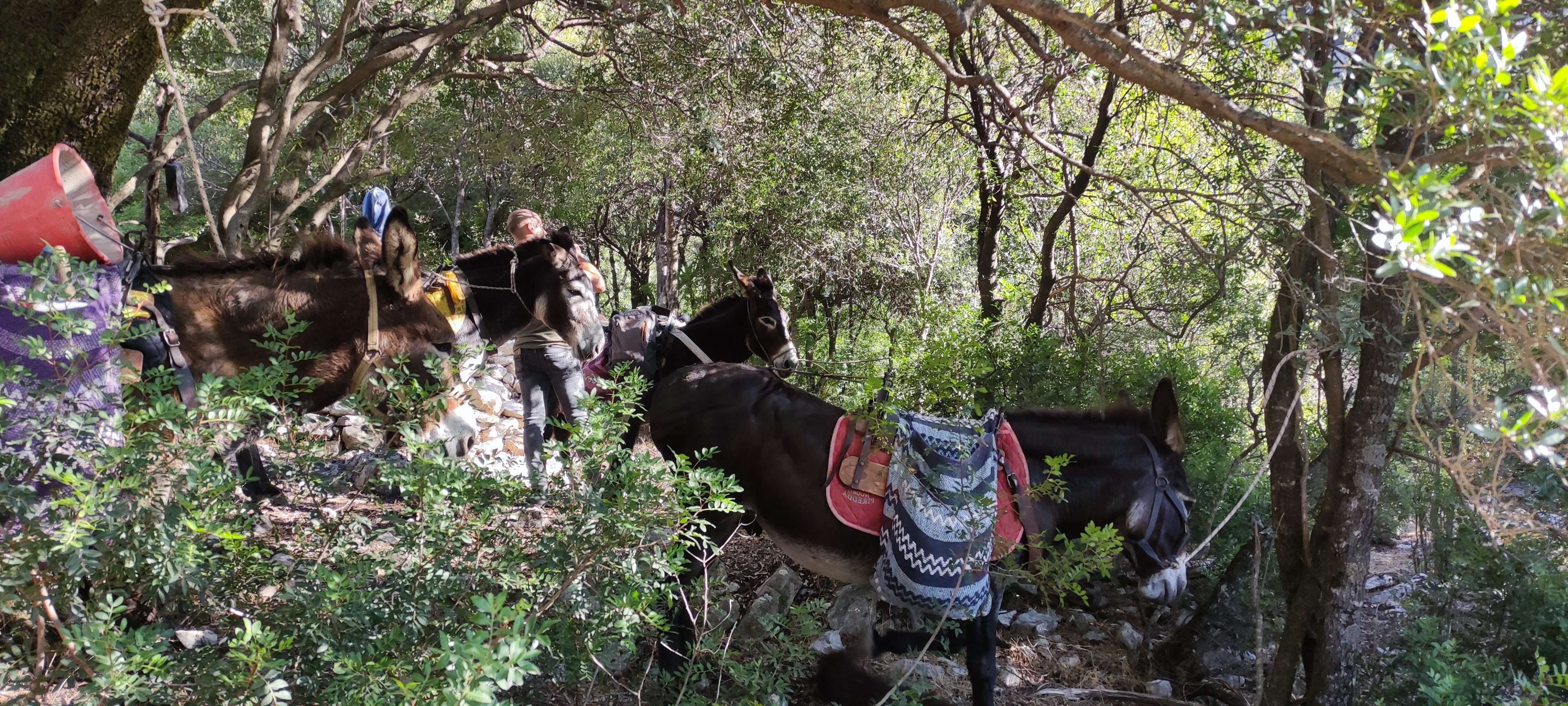
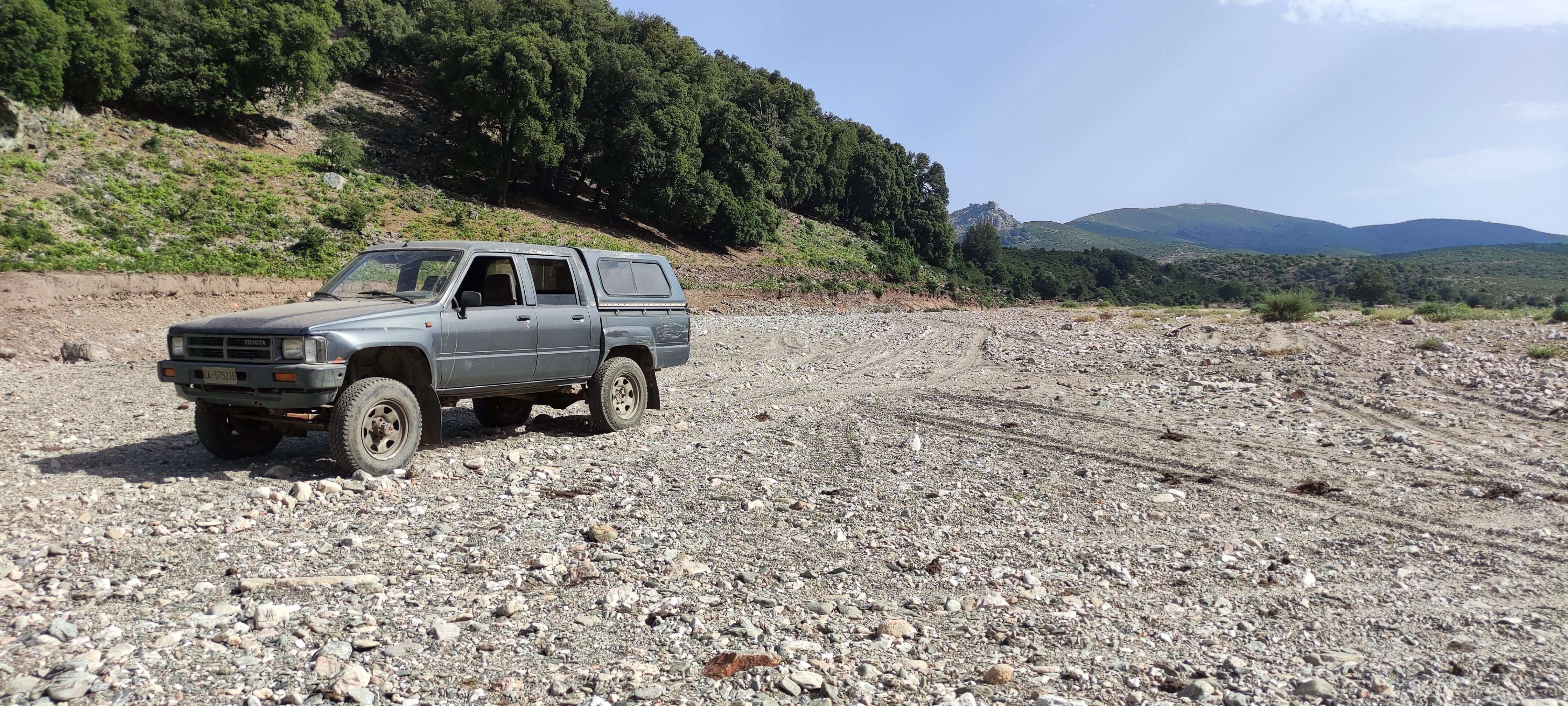
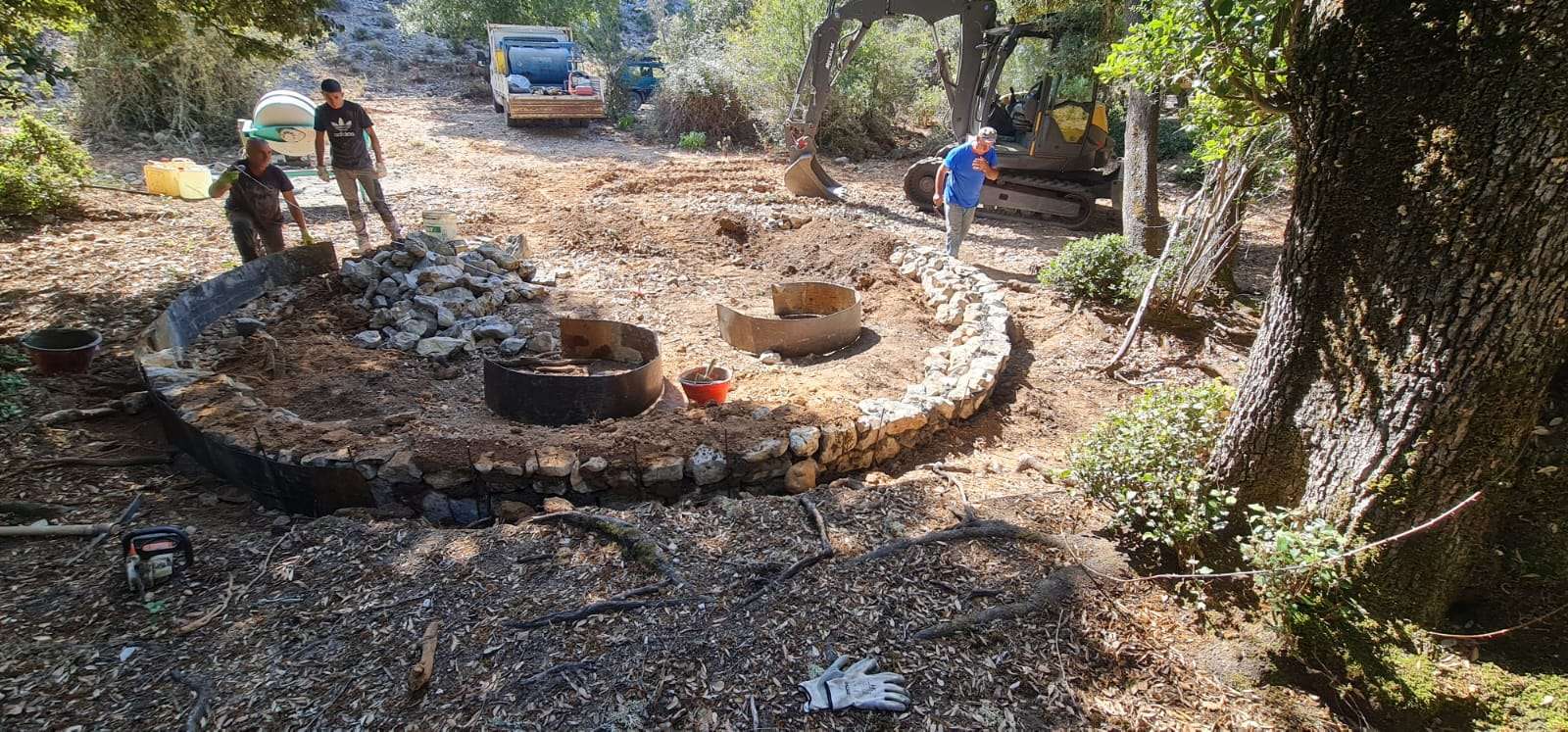
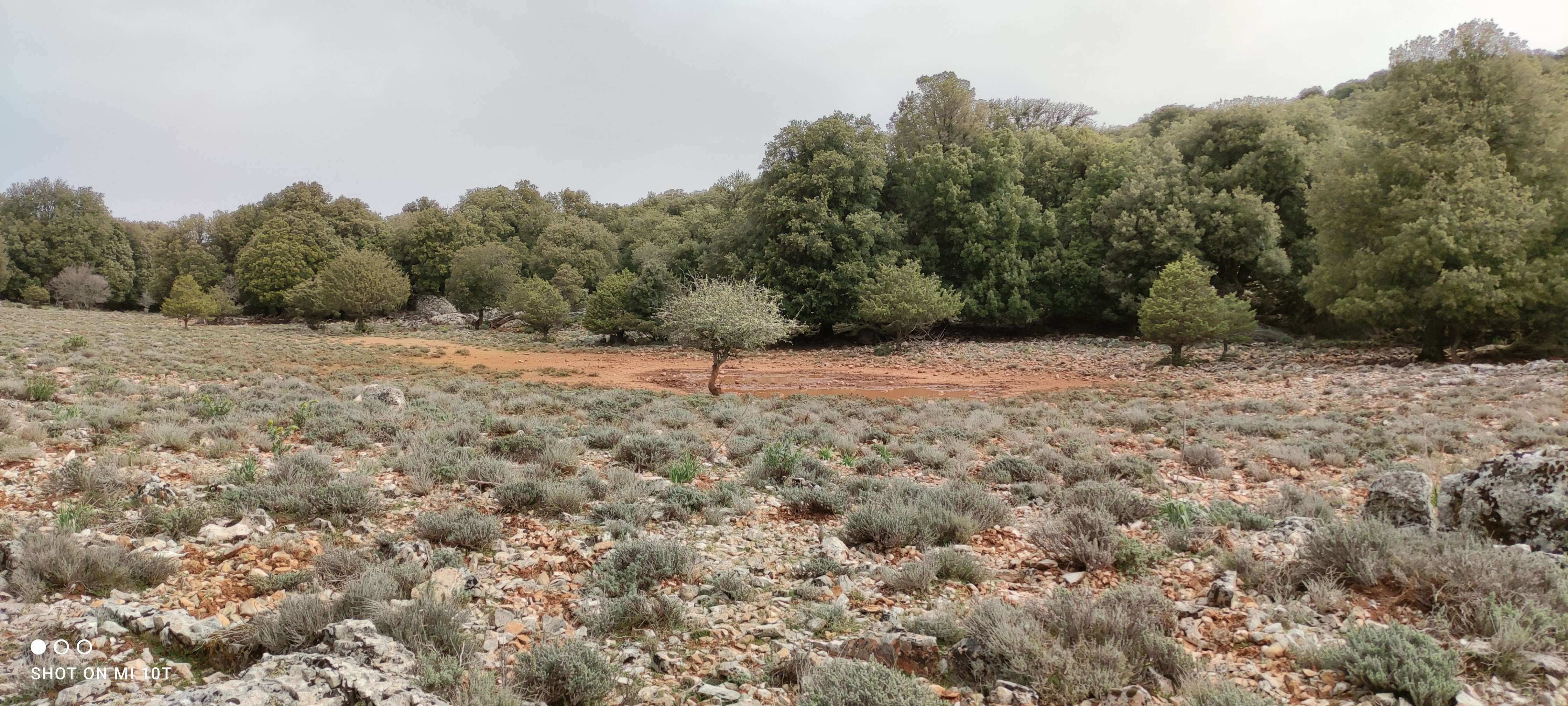
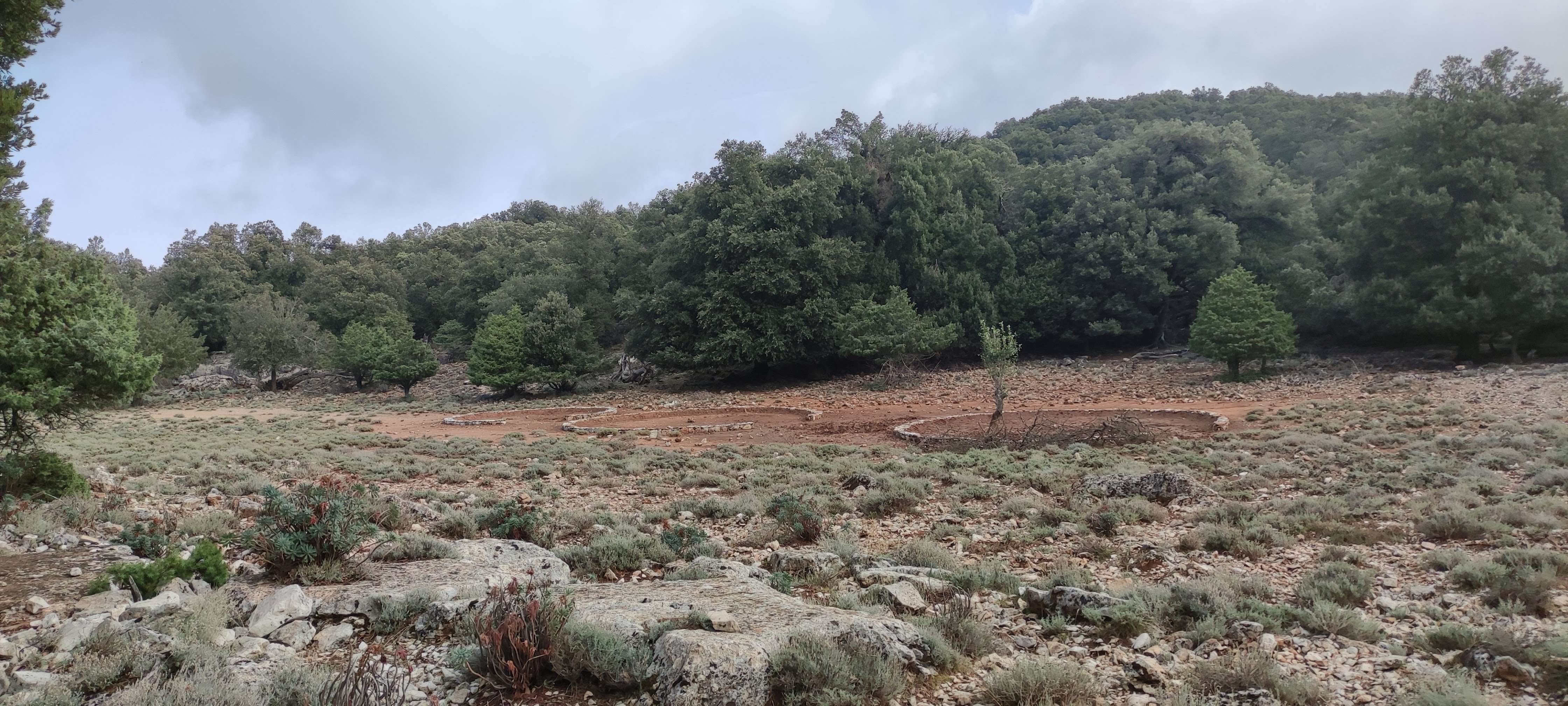
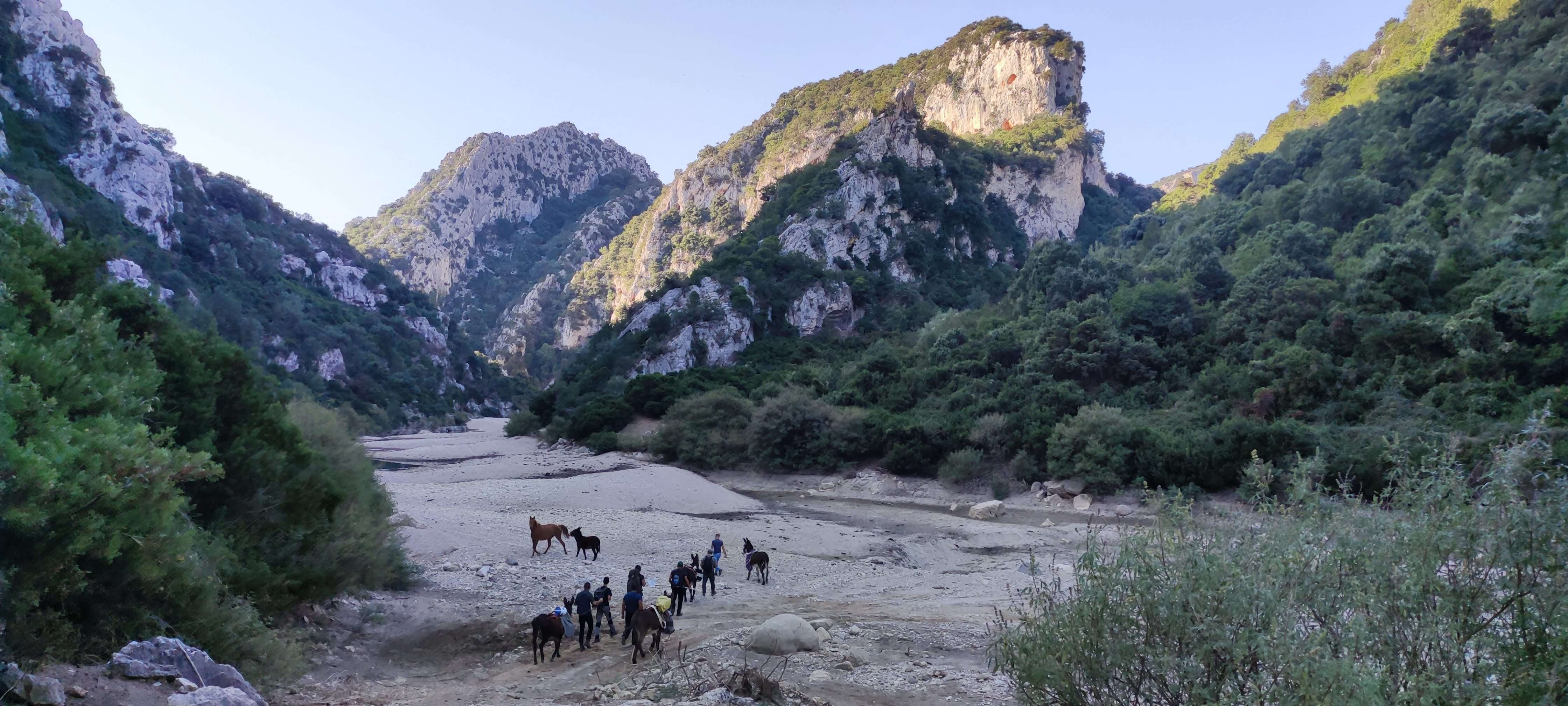

'Raccogliere l'acqua'
'Collect the Water'
The 'Collect the Water' project is a nature conservation initiative located in a Site of Community Importance in the heart of Sardinia. This wild landscape is of karstic origin and features vast rocky areas interspersed with monumental oak and yew forests, as well as grasslands.
The project studies the adaptive capacity of agro-pastoral communities and the intelligence of plants in order to plan interventions that reduce the fragmentation of sensitive habitats and ensure their conservation in the face of current climate change.
This aim is pursued through the following main actions:
- water storage to protect and maintain wildlife;
- The propagation of endemic species aims to limit habitat loss and ensure their conservation.
The first action involves the 'technology' developed by old shepherds, who devised systems for collecting and conserving water in a karst landscape where water is underground and only appears at springs or in natural caves (in Supramonte there are 500 natural caves).
Water therefore had to be collected and stored in puddles and basins to provide for the animals and basic necessities during transhumance. This reveals an ingenious ability to adapt to natural conditions, a quality that is now being amplified by climate change. In areas with rocky substrates, accumulation systems were present due to the natural landscape; in areas with clay soils, small man-made interventions were employed.
Today, these traditional water collection systems represent cultural wealth worthy of protection, forming part of the metrics through which the Supramonte landscape can be understood.
Although shepherds are no longer present, water is still necessary for the survival of wildlife. Following a detailed analysis of the site traversed in different seasons, areas in which water storage systems were concentrated were identified.
In Sardinian, puddles are called bidile and form naturally in depressions with a clay substrate that is mostly devoid of vegetation, or has very sparse vegetation. The new puddles imitate these natural formations and are bordered by stone walls to increase storage capacity and counteract evapotranspiration. These low walls create circular shapes, similar to those found in the Pinnetti settlement culture (ancient shepherds' huts).
In the 'rocky desert' at higher altitudes, geomorphology is used to identify natural fissures and rocky slopes where Lacaneddas (karstic basins) or Praiches (basins built at the base of limestone slopes to collect water) can be created or restored.
These systems generate new designs based on the identification of anthropic features in the Supramonte landscape.
Some parts of the site are remote and unreachable, so in the age of AI, nature's supreme intelligence is demonstrated as the sites are accessed by donkey.
The new water troughs are fed by a 5 km pipeline, which was designed entirely by hand.
Water storage is also important for vegetation, particularly for restoring the habitat of an endangered, endemic plant (Ribes sardoum), of which fewer than ten were recorded in 2022.
After collecting the seeds, the plants were propagated in a laboratory and some seeds were stored in the University of Cagliari's Germplasm Bank for ex-situ conservation. Once the young plants had grown, they were planted in protected sites (in situ conservation), far away from the fauna that feeds on them, particularly goats.
Thus, small secret gardens were created in ravines, where water accumulation points were set up to supply small irrigation systems and encourage growth during drought periods.
The site involves four Municipalities of the Province of Nùoro: Urzulei, Orgosolo, Oliena and Dorgali, of which Urzulei (leader group) in the site ZSC ITB022212 Supramonte di Oliena, Orgosolo e Urzulei - Su Sercone.
The works are of a specific and linear nature and their extension is difficult to quantify across the entire area.
SDG
Goal 15 - Life on land
Goal 13 - Climate Action
